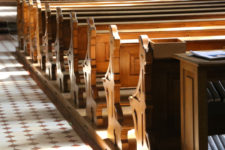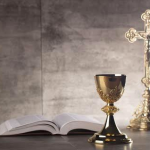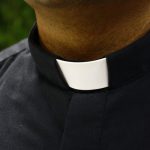Victims of Child Sexual Abuse Can Now Sue the Church

The ‘Ellis defence’ once prevented victims of child sexual abuse from suing unincorporated organisations such as the Catholic Church.
But as of 1 January 2019, legislation came into effect which requires those organisations to nominate a defendant with sufficient funds and assets to pay a victim’s claim.
Putting the changes into practise
Last week, Victorian Supreme Court Justice Michael McDonald put the new rules into practise, ordering that the Catholic Diocese of Ballarat face civil proceedings for negligence in respect of the sexual abuse perpetrated against a child by one of its priests.
The decision paves the way for a man who was raped as a nine-year old child in a confession box in Mortlake in 1982 to sue convicted sexual offender Gerard Risdale, a former priest of the Diocese.
In reaching his decision, Justice McDonald likened the church’s relationship with Mr Ridsdale to that of a “dangerous guard dog and left on premises by an occupier”, whereby the church was well-aware of the priest’s propensity to sexually abuse children but kept him there regardless.
Nail in the coffin
The decision is believed to be the first to rule that individuals can take such proceedings against the Catholic Church.
Victims’ groups are hopeful that it finally puts a nail in the coffin of the 2007 decision of the NSW Court of Appeal which found that the Church is not a separate legal entity, that its vast property portfolio is held on trust and that it is therefore immune from civil proceedings.
“Gobsmacking” legal tactics of the Catholic Church
The Catholic Church has long been criticised for talking tough against child sexual abuse, while acting the opposite way behind closed doors as well as inside the courtroom.
Hiding behind its lawyers and rulings like Ellis, the Church paid out a total of just $57 million to victims of sexual abuse in the two decades leading up to 2015, which has been described as a “paltry amount” given the extent of abuse and the fact that the value of the Church’s assets in Australia alone are estimated at $30 billion.
Victims’ advocates has expressed disgust with the Church’s tactics when faced with reports of child sexual abused by members of the clergy. Such tactics have included shifting members against which multiple complaints were made from parish to parish, threatening victims, paying for their silence, failing to report perpetrators to the authorities and pouring resources into high-paid legal teams to ensure favourable outcomes.
The legal tactics that continue to be used by the Church have been described by the lawyers for Mr Risdale’s victim as ‘gobsmacking’, as the institution fights tooth-and-nail to maintain immunity in the face of the legislative changes.
Many believe these tactics suggest the Church is unlikely to willingly change its ways, despite the recent Royal Commission into Institutional Responses to Child Sexual Abuse hearing evidence that at least 4,444 victims have been sexually abused within Catholic institutions in the decades leading up to the inquiry, with potentially thousands more remaining silent.
The Commission was scathing in its criticism of the Church, including its veil of secrecy, it’s culture of protecting its own and its failure to properly address the impact on victims of sexual abuse, many of whom have been permanently scarred and struggle to get on with their lives.
Since the end of the Commission, priests all over the world have been accused of sexual offences against children, representing a pervasive global problem for the Church. In an attempt to show the public that the Church is changing, Pope Francis recently defrocked a Chilean priest who had sexually abused numerous children, and asked for the resignations of many others.
The Victorian case
Former Victorian priest Gerard Ridsdale is one of Australia’s most notorious child sex offenders, and has been sentenced five times since 1983 for child sex offences.
It has been reported that for three decades, Mr Risdale was protected by the Church’s code of silence and shuffled from one church to another to cover up his offending and protect Church’s reputation.
The former priest’s victims were sexually abused inside the Church, in the presbytery (which is the parish house), in the priest’s car, in victims’ homes, at his parents’ home in the city of Ballarat, during outings and on holidays with the priest. He went so far as to molest one boy and his sister a few hours after their father’s funeral.
The case against him, and the church, has been listed in August 2019, and victims’ groups it will pave the way for further action against the Church.








